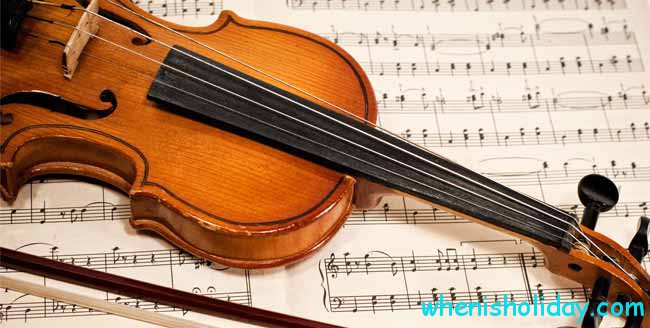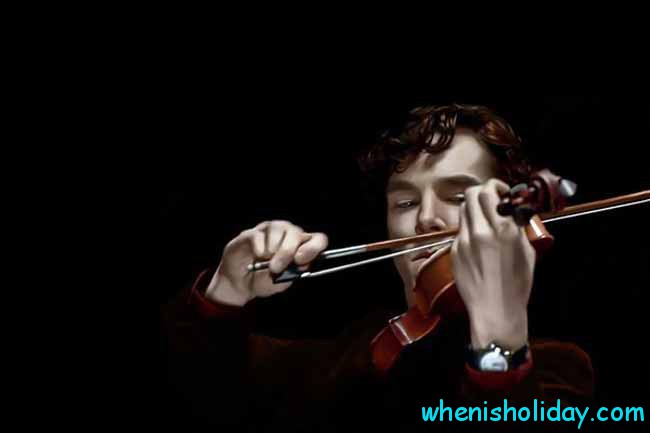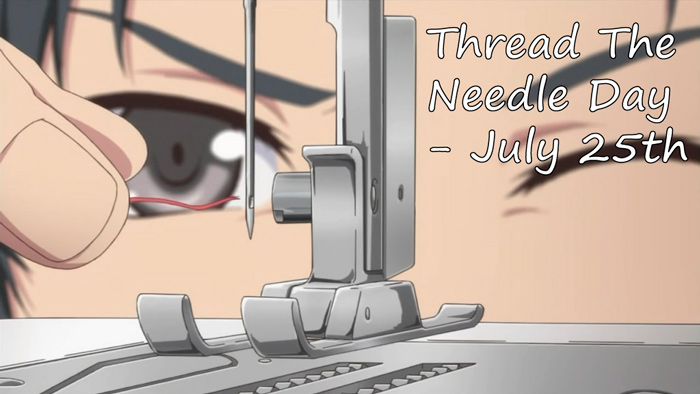Have you ever thought about life without music? Is it possible for you not to relax after a hard day or a week by listening to a nice music wherever you are? You are right! It is impossible. Thus, let’s find out when is International Violin Day in 2025?
So, the global observance is held annually on 13th of December. The main target is to recall and commemorate such an invention in the history as the violin. We may hear the instrument sounds daily but we do not pay attention. Let’s emphasize its role today.
The violin is a bowed instrument with four strings with an unusually thin and piercing sound. It embodies touching and exciting tenderness in music. This is the most expressive tool among bowed. The magic sound of an instrument can be heard in the most unexpected places like hotels in Helsinki near the Swedish theater, city parks, courtyards of sleeping areas.
History
It was told when is International Violin Day 2025 and now, we turn to history aspects.
If we talk about the origin of this magical instrument, then there are several hypotheses. There is a separate cohort of people who consider it a continuation of the Fidel, the Rebecca, and the bowed lira. These tools were particularly common in Western Europe.

There is a completely opposite opinion, which relates the progenitors of the modern instrument to the territory of the Ancient East. Adherents of this theory believe the bowed device is a type of product of the synthesis of the ancient instruments of the Arabs. There is also a hypothesis saying the instrument’s is a prototype of the mud huts of the Poles.
But the most plausible is the Italian theory. It was sultry Italy that gave the world the opportunity to enjoy the magnificent sound of the tool. Already at the beginning of the 16th century, images of this tool appeared. The paintings and frescoes with this musical object have survived to different times. Many people are familiar with the magnificent fresco of the Saron Cathedral.
Hotels in Helsinki next to the Technological Museum in style and interior borrowed the leitmotif of ancient images. But, despite this, the tool was unpopular among the music makers of Italy. Only half a century after its birth, it became interesting to music circles.
The phenomenon consisted of the fact that schools for the creation of musical tools were formed with incredible speed, and the instrument itself was not in demand. But the explanation is simple. The Italian craftsmen created truly magnificent tools and exported them to countries where this tool was fondly loved and honored. Perhaps that is why the origin is so controversial, which causes disagreement among many experts.
Recognized masters in the creation are Nico Amati, Giuseppe Guarneri, and Antonio Stradivari. But the best violinist is considered Paganini, who could play using only one string. The enthusiasm of the spectators was boundless.
The newest researchers came to the conclusion the tool is in no way a reduced “viola da gamba”. Moreover, it has been established with sufficient accuracy both these types of tackles have sharply different features in their design. All instruments related to “violet da gamba” had a flat back, flat edges, a fretted neck, a head more often with the image of a beast or a human head, cutouts on the upper surface of the tackle in the C-outlines, and finally, tuning strings by quarter and thirds. On the contrary, “Viola da Bračio”, as the immediate predecessor of the modern tool, had a quint tuning of the strings, a convex back, the edges slightly elevated, the neck without any fret, the head in a curl, and notches or “ephi”, in the outline of the inverted f.
This circumstance led to the fact the family of violets itself consisted of a consecutive reduction of the gamba. Thus, the whole composition of the old “quartet” or “quintet” arose, composed only of some violets of various sizes. But, along with the emergence of a complete family of violas, a tool was developed and perfected had all the distinctive and most characteristic features of the modern violin. And this toolis not even a “manual viola” in the direct sense of the word, but the so-called “hand lyre”, which, as a folk instrument of the Slavic lands, formed the basis of the modern family of violins. The Great Raphael (1483-1520) on one of his paintings, dating back to 1503, gives an excellent image of this tackle. Contemplating it, there is not the slightest doubt there is little left for the complete transformation of the “manual lyre” into the perfect modern violin. The only difference distinguishing the image of Raphael from the modern one consists only of number of strings – five of them with two basses – and in the outline of the pins, which strongly resemble the splitting of an old viola.
More descriptions of the new instrument in the West began to appear only from the middle of the XVI century. Thus, Hilbert Jamb de Fair (1526 -1572), presenting the distinctive features of the tool contemporary to him, from which it can be concluded the “family of violins” was constructed after the model and likeness of viols. It was from 1556, the tool existed until the end of the 17th century in several varieties known under the French names dessus, quinte, haute-contre, taille, and basse. In this form, the composition of the family of violins was established by the time when peer Marenne began writing about it (1588-1648). “Gang of twenty-four” consisted of the same instruments, but with the altered names. Following dessus, a haute-contre was going on, and the quinte was located between tailee and basse, but their volumes corresponded exactly to earlier data, which had just been mentioned. In the future, there was another change in this composition of violins, by virtue of which haute-contre disappeared completely, giving way to dessus, and tailee merged with quinte, taking the order of this latter. Thus, a new type of four-voice bowed association was established, in which the dessus corresponded to the first and second violins, tailee or quinte-alts and basse-cellos.

Meaning
What does National Violin Day mean? Firstly, you should get acquainted with the roots and history of an instrument. There are countless books and sites containing information you need. Secondly, take your relatives and friends to the nearest theatre to enjoy the sounds and relax after hard work. People believe its sounds may reduce the pressure in your mind and clean it up.
Thirdly, many festivals dedicated to the roots of the topic are held so you may easily visit some of them to get a better idea what day National Violin Day in 2025 is.
Definition
One of the best American violinists, Joshua Bell, on January 12, 2007, agreed to participate in the experiment. He played in the lobby of the metro station in the morning for 45 minutes in the guise of a regular street musician. Of the thousands of people who passed by, only seven became interested in music.
So, you should be interested in what is the date of World Violin Day.
Traditions
The day is dedicated to one of the greatest inventions ever. It’s up to you how to celebrate this observance and continue the traditions. For many centuries, people all over the world gather to honor and commemorate such invention and many organizations keep the most expensive ones in safe. It allows us to remember the best works of Stradivari and Paganini, who are the masters of this sphere. Thereby, the calendar reminds you when is Violin Day in 2025.
International Violin Day Facts
- The most famous family of master creators of the violin was the Amati family from the Italian city of Cremona. For a long time, it was believed no one could create instruments with such an amazing and rare melody and tenderness.
- There is a legend telling us Leonardo da Vinci ordered that all the time, while Gioconda posed in his studio, there was music played by bowed strings. Her smile was a reflection of the music sounded.
Well, keep in mind such history moments and our celebrations will help you to refresh your mind.



































